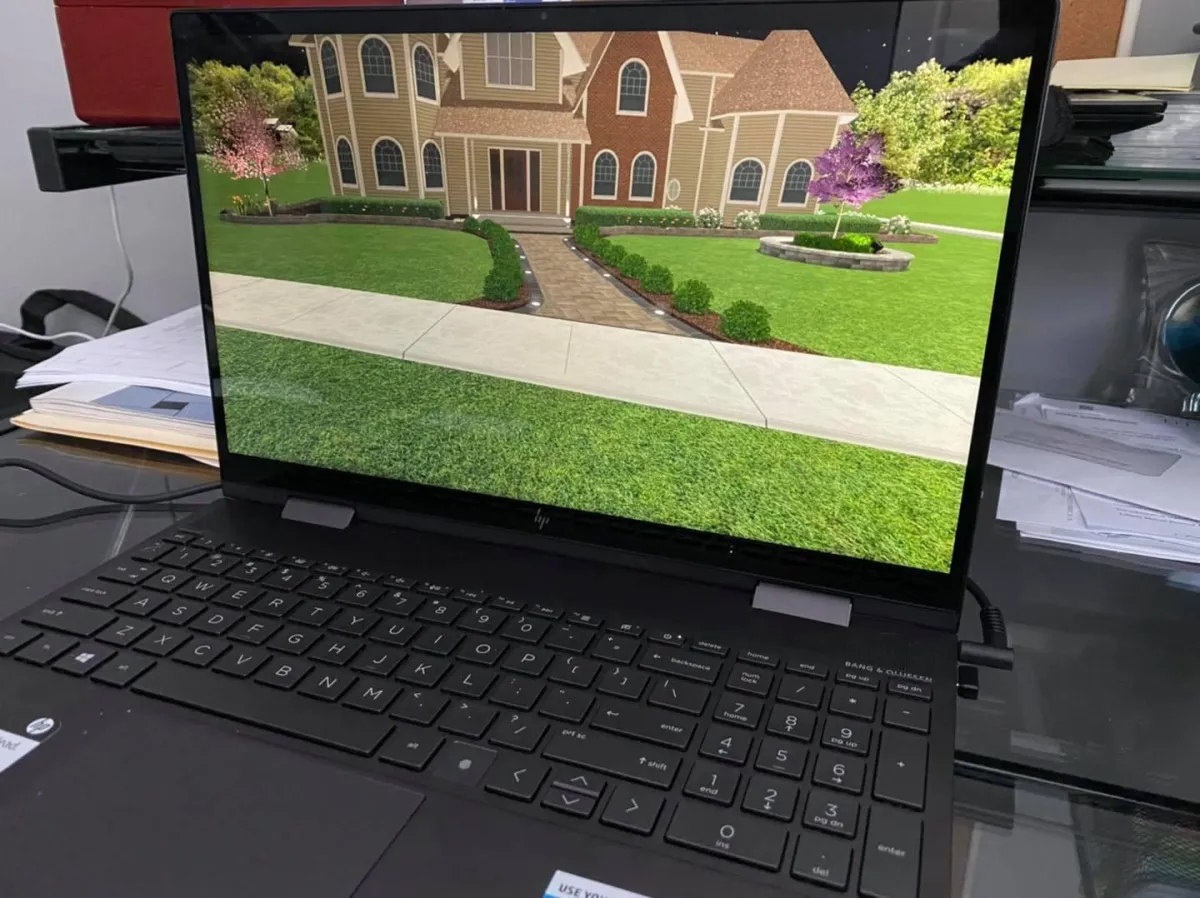Blogs

What Are the Most Common Landscape Design Mistakes to Avoid?
Some common landscape design mistakes to avoid include overcrowding plants, neglecting proper maintenance planning, ignoring the balance of hardscape and softscape elements, failing to consider the local climate and soil conditions, overlooking future plant growth and space requirements, and not planning for adequate drainage and irrigation systems.
Effective landscape design can transform outdoor spaces, adding beauty and functionality to your home. However, certain mistakes can detract from this goal, resulting in wasted effort and unsatisfactory outcomes. At Landscaping Experts Inc, we understand the importance of avoiding these pitfalls to create stunning outdoor living environments tailored to your needs.
Key Takeaways:
Improper Use of Space: Ensure spaces are comfortably usable; avoid overusing hard surfaces like concrete.
Lack of Planning: Always start with a detailed plan considering climate, soil, and regulations.
Inconsistent Materials and Plants: Choose materials and plants that coordinate well and fit a cohesive theme.
Oversized Plants: Avoid planting large plants solely for quick maturity; consider long-term growth.
Lack of Year-Round Interest: Plan for plants that offer interest throughout the seasons to maintain visual appeal.
Optimizing Space Use for Landscape Design: Balancing Soft and Hard Surfaces for Functionality
Optimizing space use in landscape design involves a delicate balance between soft and hard surfaces to enhance both functionality and aesthetic appeal. By strategically incorporating elements such as patios, walkways, and greenery, you can create a harmonious outdoor environment that maximizes usability.
Key Strategies for Optimizing Space Use:
Define Functional Zones: Begin by defining different functional zones within your outdoor space. Allocate areas for dining, relaxation, and recreation to ensure each zone serves its purpose effectively.
Integrate Patios and Pathways: Patios and pathways made from materials like concrete, pavers, or gravel provide structure and ease of movement. Position them strategically to connect different parts of the landscape while complementing the overall design.
Balance Softscaping and Hardscaping: Softscaping elements such as plants, trees, and shrubs soften the landscape and provide natural beauty. Integrate them with hardscape features to create a visually appealing contrast that enhances the overall ambiance.
Consider Vertical Space: Utilize vertical space with trellises, arbors, or vertical gardens to add greenery without sacrificing ground space. Vertical elements can also create privacy screens or define boundaries within the outdoor area.
Create Focal Points: Incorporate focal points like water features, sculptures, or fire pits to draw attention and create a sense of visual interest. These elements not only enhance the aesthetics but also define specific areas within the landscape.
Design for Accessibility: Ensure pathways and outdoor amenities are accessible to all users, including those with mobility challenges. Incorporate ramps, wide pathways, and level surfaces where necessary to promote inclusivity.
Plan for Maintenance: Choose low-maintenance plants and materials for areas that are harder to access or maintain regularly. This reduces upkeep requirements while keeping your landscape looking pristine year-round.
Optimizing space use in landscape design involves thoughtful planning and integration of various elements to achieve a cohesive and functional outdoor environment. By balancing soft and hard surfaces strategically, you can create an outdoor oasis that enhances your home's overall appeal and usability.
Importance of Detailed Planning in Landscape Design
Detailed planning is essential in landscape design to ensure that every aspect of your outdoor space harmonizes seamlessly. This process involves meticulous consideration of environmental factors, client preferences, and functional needs to achieve a cohesive and sustainable design.
Key Aspects Highlighting the Importance of Detailed Planning:
Environmental Considerations: Assessing climate, soil conditions, and sunlight exposure is crucial for selecting plants and materials that thrive in your specific environment. This ensures long-term sustainability and reduces the need for excessive maintenance.
Client Collaboration: Detailed planning begins with understanding the client's vision and requirements. By actively involving clients in the planning process, designers can tailor the landscape to their aesthetic preferences, functional needs, and budgetary constraints.
Spatial Analysis: Analyzing the available space helps in optimizing layout and functionality. It allows designers to allocate areas for different activities such as dining, relaxation, or gardening while ensuring efficient use of space.
Zoning and Regulations: Understanding local zoning laws, easements, and building regulations is critical to avoid legal issues and ensure compliance. This knowledge guides the placement of structures, pathways, and other elements within the landscape.
Aesthetic Cohesion: A well-planned landscape design achieves aesthetic cohesion by selecting materials, colors, and textures that complement the surrounding architecture and natural environment. This creates a visually pleasing and harmonious outdoor space.
Integration of Hardscape and Softscape: Balancing hardscape features like patios, walkways, and retaining walls with softscape elements such as plants and trees enhances the functionality and beauty of the landscape. Detailed planning ensures these elements work together seamlessly.
Long-Term Vision: Planning considers the long-term growth and maintenance of the landscape. It involves selecting plants that will mature well and choosing durable materials that require minimal upkeep, thereby preserving the integrity of the design over time.
This approach not only enhances the quality of life for homeowners but also adds value to the property.
Choosing Appropriate Plant Sizes for Long-Term Growth and Maintenance In Landscape Design
Choosing appropriate plant sizes in landscape design is crucial for ensuring long-term aesthetics and minimizing maintenance efforts. By selecting plants that fit well with the overall design and considering their growth potential, you can create a sustainable and visually appealing outdoor environment.
Key Considerations for Choosing Plant Sizes:
Mature Size: Understanding the mature size of plants helps in planning their placement within the landscape. Avoid overcrowding by allowing sufficient space for each plant to reach its full size without competing for resources.
Scale and Proportion: Choose plants that match the scale and proportion of your outdoor space and surrounding structures. Small gardens benefit from compact plants, while larger areas can accommodate taller or broader specimens.
Maintenance Requirements: Select plants that align with your maintenance capabilities and preferences. Low-maintenance varieties, such as native plants or drought-tolerant species, reduce the need for frequent pruning, watering, and fertilizing.
Visual Impact: Consider the visual impact of plants throughout the year. Opt for species that offer seasonal interest through blooms, foliage color changes, or texture variations, ensuring year-round appeal in your landscape.
Functionality: Integrate plants that serve functional purposes, such as providing shade, privacy screening, or attracting wildlife. Choose species that fulfill these roles effectively while enhancing the overall design aesthetic.
Soil and Climate Suitability: Assess soil conditions and climate suitability to select plants that will thrive in your specific environment. Plants adapted to local conditions are more likely to establish well and require less intensive care.
Budget Considerations: Factor in the initial cost of plants and ongoing maintenance expenses when making selections. Investing in quality plants suited to your landscape's needs can contribute to long-term cost savings and sustainability.
Choosing appropriate plant sizes involves a thoughtful balance of aesthetic preferences, functional requirements, and environmental considerations.
Common Errors in Landscape Drainage and Irrigation Systems
Common errors in landscape drainage and irrigation systems can lead to costly damage and inefficiencies. Proper installation and maintenance are crucial to ensure effective water management and preserve the health and beauty of your outdoor space.
Poor Grading: Improper grading can result in water pooling around structures or in low-lying areas, leading to soil erosion and potential water damage to foundations.
Improper Slope of Irrigation Lines: Inadequate slope in irrigation lines can cause water to accumulate, leading to overwatering in some areas and underwatering in others.
Incorrect Sprinkler Placement: Placing sprinklers too close to structures or planting beds can result in uneven water distribution, wasting water and potentially damaging plants or structures.
Clogged or Broken Sprinkler Heads: Clogged or broken sprinkler heads can lead to uneven watering and water waste. Regular inspection and maintenance are essential to ensure all components are functioning properly.
Lack of Rain Sensors or Moisture Sensors: Without rain sensors or moisture sensors, irrigation systems may operate during rainfall or when soil moisture levels are adequate, leading to unnecessary water usage.
Insufficient Drainage for Hardscape Areas: Inadequate drainage for patios, driveways, or walkways can result in standing water, which not only affects aesthetics but also poses safety hazards and potential damage to hardscape materials.
Ignoring Soil Type and Water Needs: Failing to consider soil type and plant water requirements when designing irrigation systems can lead to overwatering or underwatering, affecting plant health and landscape sustainability.
Addressing these common errors requires careful planning, proper installation, and routine maintenance of drainage and irrigation systems.
Creating Your Perfect Outdoor Oasis with Landscaping Experts Inc
Transforming your outdoor space into a functional and beautiful oasis requires careful planning and attention to detail. At Landscaping Experts Inc, we specialize in crafting bespoke landscapes that harmonize with your lifestyle and environment. Avoiding common landscape design mistakes ensures your investment enhances your home's curb appeal and enjoyment for years to come.
Contact us now at Landscaping Experts Inc to schedule your complimentary consultation. Whether you're in Joliet, Naperville, or beyond, our team is dedicated to delivering exceptional service and creating outdoor spaces that exceed your expectations.

Follow Us
Service Areas
Plainfield
Shorewood
Morris
Lake Forest
Winnetka
Hinsdale
Western Springs
Hinsdale
Service Areas
Wilmette
Northbrook
Montgomery
Deerfield
Saint Charles
Kelinworth
Golf
Campton Hills
Barrington
Hoffman Estates
Copyright © Landscaping Experts Inc. 2025. All Rights Reserved. Privacy Policy. Terms & Conditions. Web Design by Fused Media

